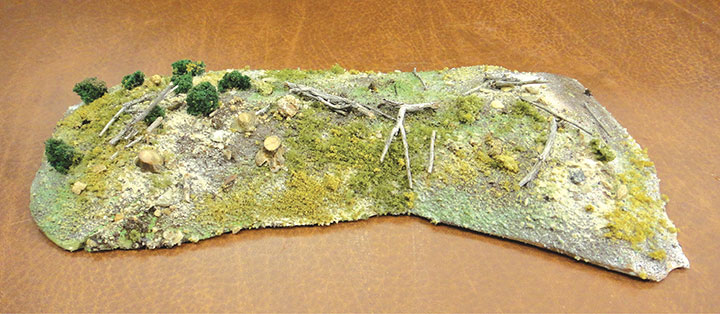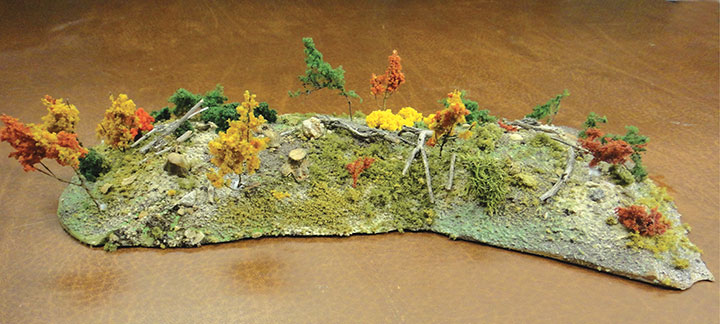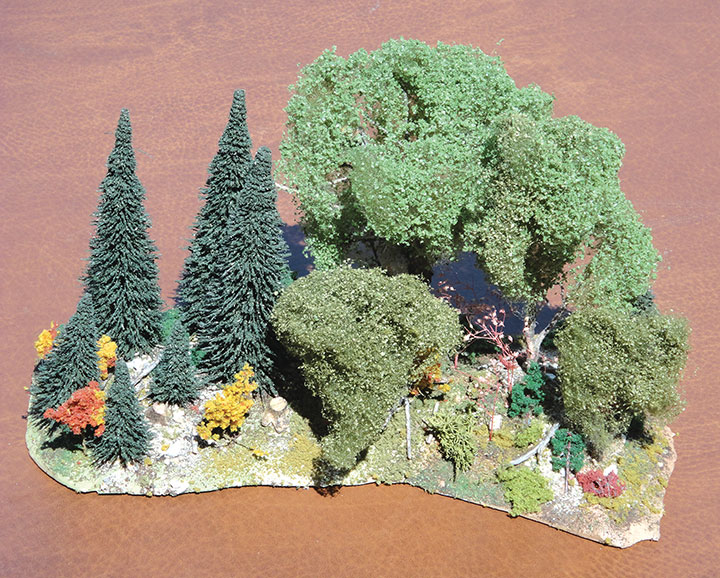There is more to a forest than trees. Forests have ground cover of many types of soil and rocks. Much dead foliage lies on the ground, including entire dead trees. Frequently there are tree stumps. There are grasses and small plants in profuse variety. Bushes and young trees at many stages of growth are present. This is called the “under story.” And yes, on top of it all there are trees.
There are a couple ways to portray a forest on a model railroad layout. For vast expanses of forest where only the canopy is visible, puff-ball trees look very convincing. I have used this technique many times. For small woodlots and highly visible edges of forests, a detailed woods is in order.
I build a forest from the ground up, literally, proceeding from smallest details to largest. An awl or nail can be used to make pilot holes for upright vegetation. I use a spray of wet water (a drop of detergent in it) to break surface tension of dry scenic components prior to applying glue. I glue everything together with a 50/50 mix of white glue and water (a drop of detergent makes them mix).
I am a great proponent of “workbench scenes.” If I have the choice of building something on the workbench or on the layout, I build it on the workbench every time. On my HOn3 Rio Grande Southern layout, about 90 percent of the hills and mountains were built at a dedicated scenery workbench. Finished scenic components were placed on the layout and blended together with scenic materials.
The sample scene illustrated in this article is typical of the workbench scenes that I place on the layout, but I have built “workbench scenery” in pieces up to eight feet long. Sometimes I build a small scene such as this and place it in the middle of a lake as an island prior to pouring the Envirotex “water.”
A forest is a model, too; and just as with our trains and structures, detail is important. Have fun playing with the artform of scenery; you can’t go wrong — it doesn’t have to actually do anything; it just sits there looking good!
Here is my sequence in photos of constructing a woods.
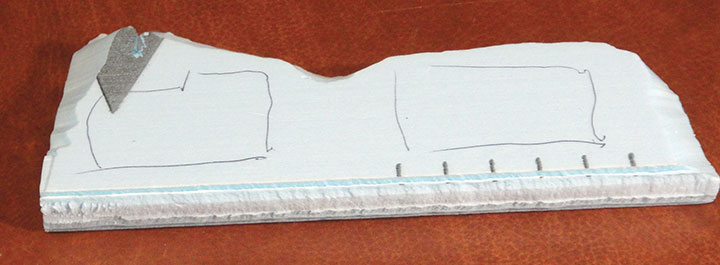
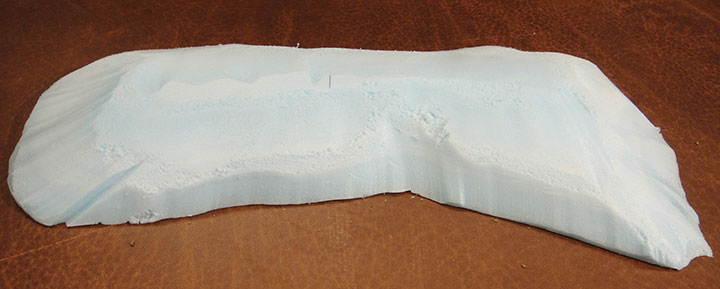
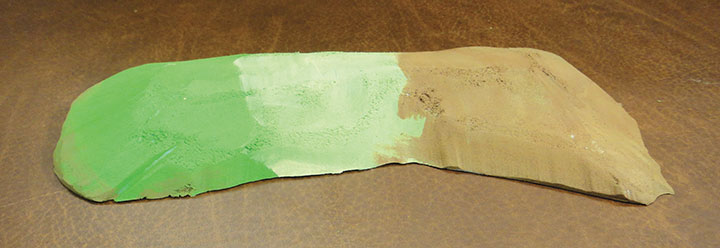
of texture.
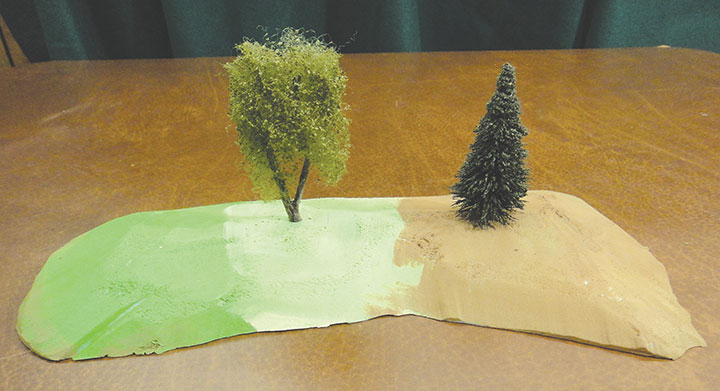
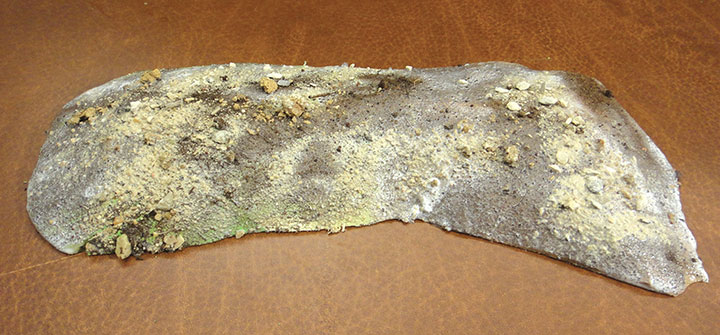

ground foam have been applied.
